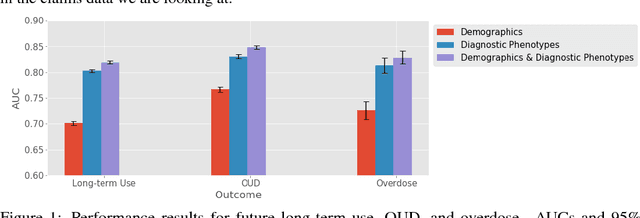Jen J. Gong
Discovering heterogeneous subpopulations for fine-grained analysis of opioid use and opioid use disorders
Dec 03, 2018



Abstract:The opioid epidemic in the United States claims over 40,000 lives per year, and it is estimated that well over two million Americans have an opioid use disorder. Over-prescription and misuse of prescription opioids play an important role in the epidemic. Individuals who are prescribed opioids, and who are diagnosed with opioid use disorder, have diverse underlying health states. Policy interventions targeting prescription opioid use, opioid use disorder, and overdose often fail to account for this variation. To identify latent health states, or phenotypes, pertinent to opioid use and opioid use disorders, we use probabilistic topic modeling with medical diagnosis histories from a statewide population of individuals who were prescribed opioids. We demonstrate that our learned phenotypes are predictive of future opioid use-related outcomes. In addition, we show how the learned phenotypes can provide important context for variability in opioid prescriptions. Understanding the heterogeneity in individual health states and in prescription opioid use can help identify policy interventions to address this public health crisis.
Learning Tasks for Multitask Learning: Heterogenous Patient Populations in the ICU
Jun 07, 2018



Abstract:Machine learning approaches have been effective in predicting adverse outcomes in different clinical settings. These models are often developed and evaluated on datasets with heterogeneous patient populations. However, good predictive performance on the aggregate population does not imply good performance for specific groups. In this work, we present a two-step framework to 1) learn relevant patient subgroups, and 2) predict an outcome for separate patient populations in a multi-task framework, where each population is a separate task. We demonstrate how to discover relevant groups in an unsupervised way with a sequence-to-sequence autoencoder. We show that using these groups in a multi-task framework leads to better predictive performance of in-hospital mortality both across groups and overall. We also highlight the need for more granular evaluation of performance when dealing with heterogeneous populations.
 Add to Chrome
Add to Chrome Add to Firefox
Add to Firefox Add to Edge
Add to Edge